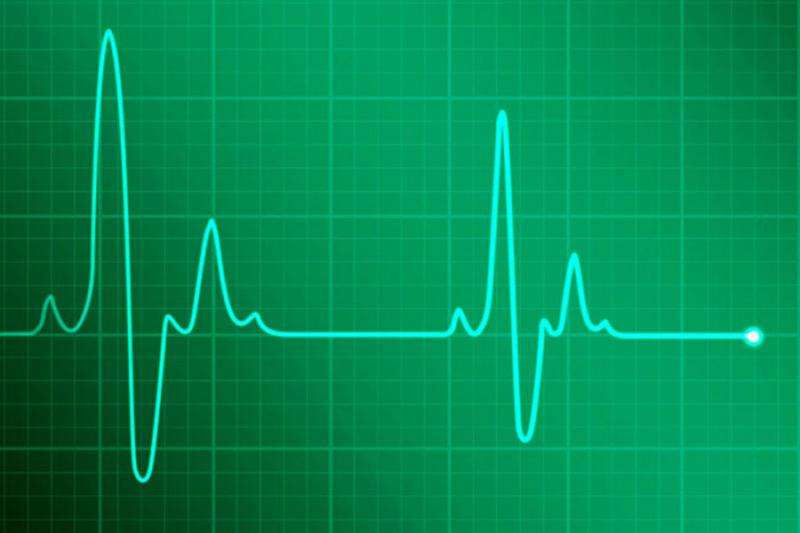Virtual heart care saves lives

Lives are saved, long hospital stays prevented and quality of life improved when people with heart failure are monitored and supported at home by health professionals using technology as simple as the phone and electronic scales to transmit a patient's weight, a report has found.
Non-invasive telemonitoring is particularly effective, with a 20 per cent reduction in deaths from any cause and almost a third fewer hospital admissions for heart failure, according to research carried out by an international team of researchers and published in a recent Cochrane Review.
The findings are good news for the significant number of Australians with limited access to health care services, says Dr Sally Inglis, Associate Professor in the Centre for Cardiovascular and Chronic Care at UTS. Dr Inglis led the Australia-Europe research team that studied the outcomes of more than 12,000 heart failure patients in 41 clinical studies of non-invasive telemonitoring and structured telephone support.
"Heart failure is a debilitating condition usually managed through regular patient visits to specialist cardiac services," says Dr Inglis.
"Patients need to be monitored for signs of deterioration. They may need help to stick to a management plan – taking medications, monitoring their fluid intake, watching for signs of likely exacerbation such as weight increase from too much fluid. They may need to discuss changes in their symptoms – are they shorter of breath today than they were yesterday?
"If face-to-face care is not possible, telephone support and telemonitoring can provide that oversight and enable clinicians and patients to act quickly to prevent deterioration."
Dr Inglis says most patients, even those who are elderly, learn to use the appropriate technology easily and are satisfied with the interventions.
About 300,000 Australians are living with heart failure, and each year about 30,000 new diagnoses are made. Among patients with mild to moderate heart failure, 20-30 per cent will die within a year; one in two patients with severe heart failure will die within a year.
Dr Inglis says that with limited health funding and a rapidly expanding aged population, it is increasingly difficult for health care systems to provide regular specialised care and support to all those with heart failure.
Specialist heart failure clinics and home visits from heart failure nurses are not available to all, nor do they have the capacity to see all patients frequently, says Dr Inglis. Some patients may find clinic attendance impossible because of cost, transport issues, disability or frailty. This is compounded in Australia, where distance creates a recognised gap in health care provision.
Dr Philip Tideman, Director of Cardiology, Country Health South Australia, says the remote care of patients is a medical advance whose time has come, though its use must be driven by clinical need rather than technology in search of a problem to solve.
"This review shows the benefits to be gained are significant – for the patient and the community," he says.
GPs are under enormous pressure, Dr Tideman says, with patients in regional areas having to wait up to six weeks for an appointment; people with heart failure often just end up in hospital.
Seeing the potential for these interventions, he is now conducting a feasibility study of virtual clinical care among 100 chronically ill patients, some with heart failure, in about 20 South Australian communities.
A patient at home transmits daily blood pressure, pulse and weight readings via modem, for example, to be assessed by a nurse on her "virtual morning ward round … all the grunt work is done without involving the doctors, which is as it should be," Dr Tideman says. "The nurse can identify if a patient is not doing well and communicate with the patient's GP if necessary."
The chief executive of Heart Foundation NSW, Kerry Doyle, says: "Heart failure patients are the frequent flyers of the health system with as many as one in five people returning to hospital within a month of their last admission.
"These patients are very ill and their condition has immense impacts on their quality of life as well as that of their families."
Doyle says this research shows that by supporting people with heart failure at home, using readily available technology, we can reduce death rates and the need for repeated hospital admissions.
She says it also proves the value of the foundation's NSW Cardiovascular Research Network, which has funded Dr Inglis's work. "Our rising stars strategy is all about applying new thinking to old problems."
More information: Prieto-Merino D, Cleland JGF. Structured telephone support or non-invasive telemonitoring for patients with heart failure. Cochrane Database of Systematic Reviews 2015, Issue 10. Art. No.: CD007228. DOI: 10.1002/14651858.CD007228.pub3.
















